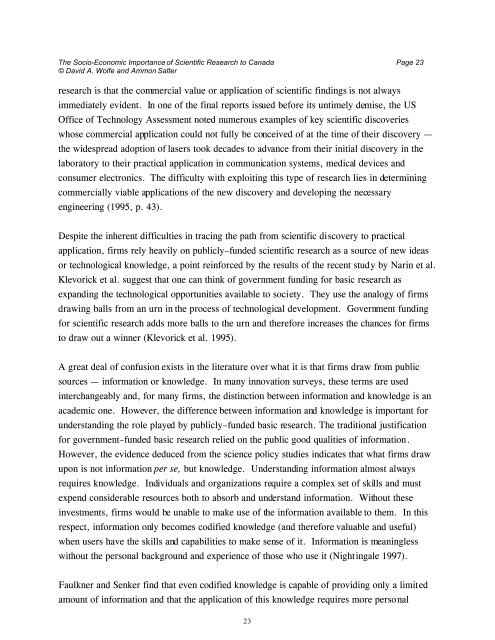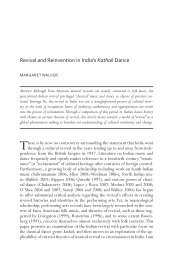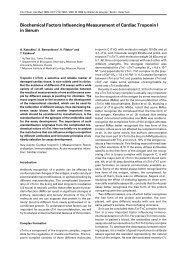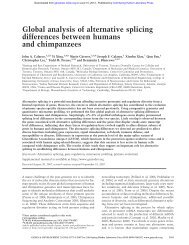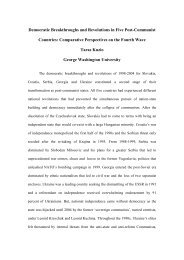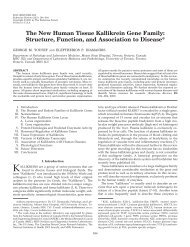The Socio-Economic Importance of Scientific Research To Canada
The Socio-Economic Importance of Scientific Research To Canada
The Socio-Economic Importance of Scientific Research To Canada
Create successful ePaper yourself
Turn your PDF publications into a flip-book with our unique Google optimized e-Paper software.
<strong>The</strong> <strong>Socio</strong>-<strong>Economic</strong> <strong>Importance</strong> <strong>of</strong> <strong>Scientific</strong> <strong>Research</strong> to <strong>Canada</strong> Page 23© David A. Wolfe and Ammon Salterresearch is that the commercial value or application <strong>of</strong> scientific findings is not alwaysimmediately evident. In one <strong>of</strong> the final reports issued before its untimely demise, the USOffice <strong>of</strong> Technology Assessment noted numerous examples <strong>of</strong> key scientific discoverieswhose commercial application could not fully be conceived <strong>of</strong> at the time <strong>of</strong> their discovery —the widespread adoption <strong>of</strong> lasers took decades to advance from their initial discovery in thelaboratory to their practical application in communication systems, medical devices andconsumer electronics. <strong>The</strong> difficulty with exploiting this type <strong>of</strong> research lies in determiningcommercially viable applications <strong>of</strong> the new discovery and developing the necessaryengineering (1995, p. 43).Despite the inherent difficulties in tracing the path from scientific discovery to practicalapplication, firms rely heavily on publicly–funded scientific research as a source <strong>of</strong> new ideasor technological knowledge, a point reinforced by the results <strong>of</strong> the recent study by Narin et al.Klevorick et al. suggest that one can think <strong>of</strong> government funding for basic research asexpanding the technological opportunities available to society. <strong>The</strong>y use the analogy <strong>of</strong> firmsdrawing balls from an urn in the process <strong>of</strong> technological development. Government fundingfor scientific research adds more balls to the urn and therefore increases the chances for firmsto draw out a winner (Klevorick et al. 1995).A great deal <strong>of</strong> confusion exists in the literature over what it is that firms draw from publicsources — information or knowledge. In many innovation surveys, these terms are usedinterchangeably and, for many firms, the distinction between information and knowledge is anacademic one. However, the difference between information and knowledge is important forunderstanding the role played by publicly–funded basic research. <strong>The</strong> traditional justificationfor government–funded basic research relied on the public good qualities <strong>of</strong> information.However, the evidence deduced from the science policy studies indicates that what firms drawupon is not information per se, but knowledge. Understanding information almost alwaysrequires knowledge. Individuals and organizations require a complex set <strong>of</strong> skills and mustexpend considerable resources both to absorb and understand information. Without theseinvestments, firms would be unable to make use <strong>of</strong> the information available to them. In thisrespect, information only becomes codified knowledge (and therefore valuable and useful)when users have the skills and capabilities to make sense <strong>of</strong> it. Information is meaninglesswithout the personal background and experience <strong>of</strong> those who use it (Nightingale 1997).Faulkner and Senker find that even codified knowledge is capable <strong>of</strong> providing only a limitedamount <strong>of</strong> information and that the application <strong>of</strong> this knowledge requires more personal23


